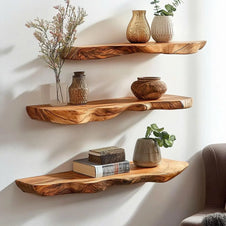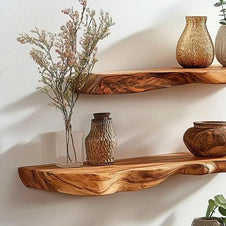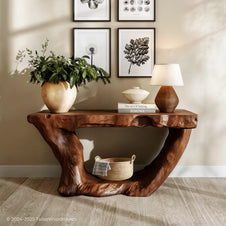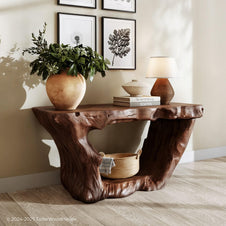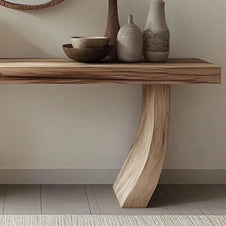You might think a bookshelf is just a few planks and screws—but the type of wood you choose will determine whether that shelf stands proud for decades or warps and sags under its own weight. What is the best wood for bookshelves? It’s a question every home renovator, DIYer, or designer eventually asks.
Bookshelves do more than just hold books—they shape your room, support your collections, and silently speak to your taste. A carefully chosen wood species will elevate the look of your space while offering strength, durability, and peace of mind.
Ready to avoid warping, splinters, and wasted money? Let’s explore:
-
The top solid and engineered wood types used for bookshelves
-
Which species are strongest for heavy books
-
Styling options and finishes for different home aesthetics
-
Sustainability and cost considerations
-
Common mistakes to avoid when choosing bookshelf wood
By the end, you’ll confidently know what is the best wood for bookshelves—and which option fits your goals, space, and budget.
1. Solid Wood Options: Timeless Strength and Character
If longevity and beauty are high on your list, solid wood remains the top contender for anyone asking what is the best wood for bookshelves. Here's a breakdown of the most trusted hardwoods and softwoods used by pros and DIYers alike:
Oak – Classic Strength for Heavy Loads
-
Dense and weight-bearing; rarely sags
-
Visible grain adds texture to traditional or farmhouse interiors
-
Takes stain well, allowing you to match other wood tones
Maple – Clean, Smooth, and Versatile
-
Harder than oak, with a more subtle grain
-
Ideal for modern or painted finishes
-
Resistant to wear—great for daily-use bookshelves
Walnut – Premium Look with Deep Tones
-
Rich chocolate hues offer luxury and warmth
-
Naturally strong and warp-resistant
-
Excellent for statement shelves in living rooms or offices
Pine – Softwood with Budget Appeal
-
Lightweight and easy to work with
-
Ideal for light-load shelves or decorative pieces
-
Needs sealant to prevent dents and moisture absorption
Tip: For strength, always choose kiln-dried solid wood that’s at least ¾" thick. Thicker boards (1"–1.25") are preferred for longer spans or heavy hardcovers.
 Compare our oak, maple, and walnut bookshelf builds side by side to see strength and grain variation in action.
Compare our oak, maple, and walnut bookshelf builds side by side to see strength and grain variation in action.
2. Engineered Wood: Affordable but Know the Limits
When budget or availability is a concern, engineered woods like plywood or MDF can be useful—if used properly. But not all engineered products are created equal.
Plywood – Layered Strength
-
Made from thin wood veneers glued together, making it stronger than MDF
-
Best if labeled "furniture-grade" or "cabinet-grade"
-
Avoid voids in cheaper plywood that may weaken the structure
-
Can be stained or veneered to mimic hardwood
-
Ideal for garage bookshelves, built-ins, or cost-effective large installations
MDF (Medium-Density Fiberboard) – Smooth but Fragile
-
Composed of wood fibers and resin
-
Great for painted shelves but can sag under weight
-
Susceptible to water damage—avoid in damp areas
-
Heavier than plywood and difficult to repair if chipped
-
Often used in store-bought bookshelves for its affordability
Veneered Particleboard – Budget-Friendly but Temporary
-
Surface veneer looks polished, but interior core lacks durability
-
Not recommended for long-term or heavy book use
-
Shelves often begin to bow within a few years with regular load
-
Best for decorative shelves with minimal weight
Tip: If using engineered wood, reinforce shelves with cleats or metal supports every 24–36 inches to prevent sagging. Always seal cut edges to prevent water absorption.
 Explore the differences between plywood and MDF bookshelf styles—and where each works best.
Explore the differences between plywood and MDF bookshelf styles—and where each works best.
3. Matching Wood Type to Use Case: One Size Doesn’t Fit All
Not all bookshelves are created equal—and neither are the wood types behind them. To answer what is the best wood for bookshelves accurately, we must match material choice to function, environment, and style. Let's explore the most common use cases and wood recommendations:
Still wondering what is the best wood for bookshelves in your home? Let’s look at common bookshelf scenarios and match them to the best wood option:
Floor-to-Ceiling Library Walls
-
Best wood: Oak, maple, or birch plywood
-
Strong enough for weight, stylish enough for impact
Living Room Display Shelf
Kids’ Room or Playroom
Garage or Basement Storage
-
Best wood: Exterior-grade plywood or treated pine
-
Withstands moisture, dust, and rough use
Bedroom Reading Nook
-
Best wood: Birch, cherry, or painted maple
-
Matches soft, cozy spaces while still holding hardcovers
Bonus Tip: For most home builds, combining solid wood for visible areas and plywood for hidden structural parts creates the perfect balance of budget and quality.
 Check out how bookshelf wood choices vary between rooms and functions.
Check out how bookshelf wood choices vary between rooms and functions.
4. Wood Thickness, Span, and Shelf Depth: What Actually Holds Weight
You’ve picked your wood species—but before making that cut or purchase, ask: how thick does your shelf need to be? How far can it span without bending? These physical dimensions matter as much as material when deciding what is the best wood for bookshelves.
Recommended Shelf Thickness
-
3/4 inch (19mm): Minimum for most bookshelves under 36” wide
-
1 inch (25mm): Ideal for longer shelves or heavier books
-
1.25–1.5 inch (30–38mm): Recommended for hardwoods in large custom pieces
Thicker shelves resist sagging, especially under concentrated weight like hardcover books. Always increase thickness if using softer woods like pine or MDF.
Maximum Span Without Support
-
Solid hardwood (1 inch thick): Up to 36” with average loads
-
Plywood (3/4 inch): Safe up to 30” without bowing
-
MDF (3/4 inch): Limit to 24” for safety
Pro Tip: Add vertical dividers or mid-span brackets to break long shelves into smaller, more stable spans.
Optimal Shelf Depth
-
8–10 inches: Ideal for novels and paperbacks
-
10–12 inches: Suits oversized books, décor, and mixed-use shelves
-
14–16 inches: Deep enough for record collections or large format books
Use our visual guide to compare depth, thickness, and span in bookshelf planning.

Whether you’re building floating shelves, open units, or full bookcases, proportions matter. Choosing the right size of wood isn’t just about avoiding sag—it’s about creating shelves that look, feel, and perform beautifully.
5. Finishes, Budget, and Sustainability: The Last Variables That Matter
Even the strongest shelf can disappoint if the finish flakes off, the cost blows your budget, or the lumber comes from questionable sources. When you’re weighing what is the best wood for bookshelves, factor in three final lenses:
Finishes that Protect & Showcase
-
Clear polyurethane or hard-wax oil lets natural grain shine on oak, maple, and walnut while adding scratch resistance.
-
Stain + sealer tints lighter woods (pine, birch) to mimic pricier species—but test on scraps to avoid blotching.
-
Paint over MDF or knot-free maple for a crisp, modern look. Use primer first to curb tannin bleed and moisture wicking.
Budget Reality Checks
-
Pine and cabinet-grade plywood remain the most wallet-friendly at the big-box store.
-
Mid-tier: Maple and birch plywood balance durability and cost—perfect for large built-ins.
-
Premium: Walnut, cherry, and rift-sawn white oak can triple material costs but deliver heirloom appeal.
Sustainability Signals
-
Look for FSC-certified hardwoods and plywood to ensure responsible forestry.
-
Reclaimed beams or barnwood add story-rich patina while keeping lumber out of landfills.
-
Water-based finishes cut VOCs and odor, making indoor air quality part of the best-wood equation.
Tip: Price fluctuates by region—call local mills and salvage yards before settling. Sometimes the “best” wood is the one you rescue and refinish.
Conclusion: Bringing It All Together
So, what is the best wood for bookshelves? The honest answer is: the wood that balances strength, style, span, budget, and conscience for your project.
-
Need bullet-proof load capacity? Kiln-dried oak or hard maple at a full inch thick won’t let you down.
-
Chasing a luxe statement piece? Walnut delivers depth and drama—worth every extra dollar when the shelf is a focal point.
-
Working on a tight budget or painting anyway? Furniture-grade plywood or MDF, properly supported and sealed, offers clean lines without draining your wallet.
-
Prioritizing eco-cred? FSC-certified hardwood or reclaimed lumber paired with low-VOC finishes keeps things green.
Match wood species to room function, reinforce long spans, respect depth guidelines—and your shelves will stay arrow-straight for decades. Whether you’re a weekend DIYer or a seasoned carpenter, the decision framework above turns a vague “maybe pine?” into a clear, confident choice.
Grab your measuring tape, select your boards, and build with intention. Soon your books—and your guests—will be resting on shelves that look stunning, stay solid, and quietly answer the question for everyone who admires them: “Why yes, that is the best wood for bookshelves.”

